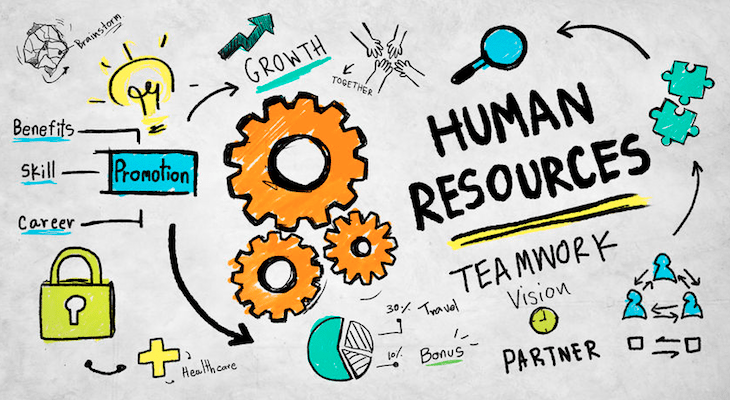The Evolution of the HR Function through the Decades
Traditionally, Human Resources or HR was viewed as a support function whose primary role was to take care of payroll, time tracking, and disputes between the unions and the organizations.
Indeed, in the manufacturing era, the term used for HR functions was personnel management and industrial relations wherein the job of the personnel manager was to ensure that salaries are paid on time, mediating between the unions and the organizations, and otherwise being peripheral to the other functions such as production, operations, sales and marketing, and strategy formulation.
It was only with the advent of the services sector that the role of the erstwhile personnel manager transformed into “human resources” management and later on, to people management and people enabling and people empowerment.
Note the emphasis on resources and people as the services sector relies on human capital as the key asset and hence, the HR managers were expected to contribute to strategic goals and objectives.
In other words, the HR function evolved and transformed into one where it was no longer peripheral or a support function, and instead of times when human resources are viewed as sources of sustainable strategic advantage, the role of the HR manager was to aid and enable such resources to contribute effectively and meaningfully to the organizational strategies.
What is an HR Scorecard?
Concomitant to these developments was the evolution of the initiatives such as HR Scorecard which are tools to measure how well the HR function is aligned to the overall strategic goals of the organization.
In other words, HR now was expected to align its recruitment, compensation, and employee retention strategies to the organizational strategies.
What this means is that in contemporary organizations, the HR managers have a “seat at the leadership table” or to put it simply, they have to be aligned with the larger organizational strategies.
Towards this end, the HR Scorecard works by providing decision-makers with data and inputs about how much the employee recruitment and retention processes cost and what are the benefits of the same.
For much of the 20th century, it was commonly understood that these costs are part of the overall organizational costs and there was no way to measure the benefits of such expenses in “tangible” ways.
In other words, what this means is that an HR Scorecard provides the organizational leaders with metrics and data in tangible terms about the payoffs and the benefits from HR processes and activities.
How the HR Scorecard Works
How the HR Scorecard works is that by drawing up the budget for the HR function, key cost items and overheads are identified and once done so, then such costs are translated into how much benefit that they are bringing to the overall organization.
For instance, if high potential and highly talented employees are hired, the costs of hiring and retention are then measured and stacked against the likely benefits that such activities bring to the organization.
Apart from this, the real usefulness of HR Scorecards is that it gathers metrics about activities and processes such as training and then identifies the likely benefits in terms of result oriented and metric-based training outcomes.
In other words, “by keeping score” of which training cost how much and how useful or relevant it was in addition to how much benefit that such training meant to the attendees, the HR Scorecard provides the leadership and the HR managers with measures and metrics on the “value” that is being created to the organization.
Thus, HR scorecards are indeed useful and relevant in contemporary organizations that take human resources seriously.
What are the Benefits of HR Scorecards?
The key benefit or the relevance of tools such as HR Scorecards is that it aligns the broader organizational strategies with the HR strategies and the convergence of organizational goals with the HR goals brings the HR function in line and tune with the overall organizational ecosystem.
For instance, how this works in the real world is that if an organization identifies superlative customer service as a strategic goal, the HR scorecard helps in measuring the benefits of initiatives such as training the customer service representatives and the associated staff costs involved in hiring and retaining such key personnel.
At the end of the year, the benefits of the initiatives as measured by customer feedback surveys are tallied to the costs of the initiatives so that organizational decision makers and more importantly, the HR Managers have an idea about the effectiveness and efficacy of their hiring and retention strategies and their usefulness and relevance to the broader organizational goals and objectives.
In other words, the HR function is no longer a “silo” that stands apart in “splendid isolation” and is instead, aligned with the overall organizational ecosystem of goals and objectives.
Aligning HR and Organizational Strategies
Thus, the convergence of HR and the organizational strategies creates synergies for all the organizational stakeholders.
Indeed, while it can be argued that the HR Function was always expected to be aligned to the overall organizational imperatives, the key benefit that the HR Scorecard brings is that it provides data and metrics to support its qualitative narrative.
In other words, the HR Scorecard operates through data-driven and metric-based measurement and tracking of the progress and the benefits of the various initiatives.
This data based approach combined with an objective CBA or Cost-Benefit Analysis means that decision-makers can identify where costs can be cut or where optimization and rationalization of benefits accrued from such costs can be done.





